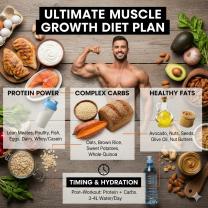What is the best workout for seniors?
The best workout for seniors depends on individual health, fitness levels, and any specific conditions or limitations. However, here are some effective and safe workouts tailored for seniors' fitness:
Walking: A low-impact aerobic exercise that's gentle on joints. It improves cardiovascular health, strengthens bones, and boosts mood. Aim for at least 30 minutes of brisk walking most days of the week.
Strength Training: Using light weights, resistance bands, or bodyweight exercises can help maintain muscle mass, improve strength, and prevent age-related muscle loss. Focus on exercises targeting major muscle groups, like squats, lunges, and bicep curls.
Yoga: Provides flexibility, balance, and stress relief. Many yoga poses can be modified for seniors and help improve balance, joint mobility, and overall body strength.
Tai Chi: A gentle martial art that focuses on slow, deliberate movements and breathing. Tai Chi improves balance, flexibility, and reduces the risk of falls.
Water Aerobics: Low-impact and easy on joints, water exercises are beneficial for seniors. Water aerobics classes or swimming can improve cardiovascular fitness, strength, and flexibility.
Cycling or Stationary Biking: Cycling or using a stationary bike is a great way to improve cardiovascular health without putting stress on joints. It's customizable to individual fitness levels.
Pilates: Focuses on core strength, flexibility, and posture. It's beneficial for building core stability and improving overall body strength.
Balance Exercises: Incorporating exercises that improve balance, such as standing on one leg, heel-to-toe walking, or balance-specific routines, can help prevent falls.
Remember, it's crucial for seniors to consult with a healthcare professional before starting any new exercise regimen, especially if they have underlying health conditions or concerns. Start slowly and gradually increase the intensity or duration of exercises. Listening to the body and stopping if there's pain or discomfort is essential. Tailoring workouts to individual needs and abilities is key to a safe and effective fitness routine for seniors.
Optimal workout routines designed for seniors
Senior citizens can significantly benefit from regular physical activity, which can help maintain overall health, improve balance, and reduce the risk of chronic diseases. Here's a guide to optimal workout routines designed for seniors:
General Considerations:
Consult a Healthcare Professional: Before starting any new exercise program, it's crucial to consult a healthcare professional to assess your overall health and determine any limitations or precautions.
Start Gradually and Progress Slowly: Begin with low-intensity exercises and gradually increase the duration and intensity as your fitness level improves.
Listen to Your Body: Pay attention to your body's signals and take rest days when needed. Avoid pushing yourself too hard, especially if you experience pain or discomfort.
Warm-up and Cool-down: Always warm up before exercise to prepare your muscles and cool down afterward to promote recovery.
Incorporate Variety: Include a mix of exercises to target different muscle groups, including aerobic exercises for cardiovascular health, strength training for muscle strength and endurance, and flexibility exercises for range of motion.
Recommended Exercise Types:
Walking: Walking is a low-impact exercise that can be easily adjusted to your fitness level. Aim for at least 30 minutes of brisk walking most days of the week.
Swimming or Water Aerobics: Water exercises provide a low-impact and joint-friendly workout, reducing stress on the joints while still challenging your muscles.
Strength Training: Strength training exercises, using light weights or resistance bands, help maintain muscle mass, improve bone density, and reduce the risk of falls.
Flexibility Exercises: Yoga, tai chi, or simple stretching exercises can improve flexibility, balance, and posture.
Balance Exercises: Balance exercises, such as standing on one leg or walking heel-to-toe, can help maintain balance and reduce the risk of falls.
Sample Workout Routine:
Monday: Brisk walking for 30 minutes
Tuesday: Strength training for upper body (arms, shoulders, back)
Wednesday: Water aerobics or swimming
Thursday: Rest or low-impact activity like stretching
Friday: Strength training for lower body (legs, hips, core)
Saturday: Brisk walking or other outdoor activity
Sunday: Rest or low-impact activity like yoga
Additional Tips:
Find an Exercise Buddy: Having a workout partner can provide motivation and support, making exercise more enjoyable.
Join a Senior Fitness Class: Group fitness classes offer a structured environment for exercise, social interaction, and guidance from a qualified instructor.
Make Exercise a Habit: Schedule regular exercise sessions into your routine and treat them as important appointments.
Set Realistic Goals: Set achievable goals and celebrate your progress along the way to stay motivated.
Enjoy the Process: Find activities you enjoy and make exercise a fun part of your daily life.













